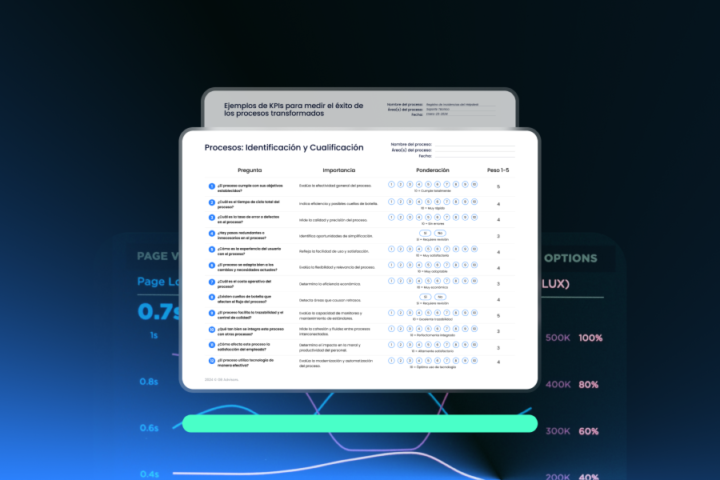 Some time ago, we warned you about ransomware, its dangers and even some curious facts so that you were on the ball to its forms. Now, to the already big family of digital threats; cryptojacking adds to put into risk your systems. This new form of malware distinguishes from others because it does not go after your digital assets (information, data, plans, etc.); but directly after your devices to exploit them for illegal enrichment.
Some time ago, we warned you about ransomware, its dangers and even some curious facts so that you were on the ball to its forms. Now, to the already big family of digital threats; cryptojacking adds to put into risk your systems. This new form of malware distinguishes from others because it does not go after your digital assets (information, data, plans, etc.); but directly after your devices to exploit them for illegal enrichment.
Cryptojacking: Beginning and Evolution
At first, cryptojacking had place through the installation of malicious software so to turn computers into illegal mining assets. That is to say; hackers behind malicious software employed third-party devices to mine cryptocurrencies on their behalf without the owner’s knowledge or consent.
Now, although the premise remains the same (installation of malicious software for illegal profit); it has evolved over time and has increased the bet. For this, hackers take advantage of JavaScript to cast the net wider to reach mobile devices.
 That is to say, they take advantage of the JavaScript’s ability of being installed directly from the web on any device to automatically execute the malicious software when opening the browsers. In this fashion, users do not even realize that they’re giving away the resources of their machines to unlawfully enrich third parties.
That is to say, they take advantage of the JavaScript’s ability of being installed directly from the web on any device to automatically execute the malicious software when opening the browsers. In this fashion, users do not even realize that they’re giving away the resources of their machines to unlawfully enrich third parties.
In more precise terms, any user that navigates within a web page infected with cryptojacking; activates a sequence of commands that execute actions so that its processor acts as a generator of virtual currencies in favor of hackers. And all this happens without their consent.
However, cryptojacking programs do have their patterns: Generally, they host on pages that use streaming; and among them, they prefer those that transmit tv content; online video games; Torrent downloads and adult content.
How Cryptojacking programs host on your devices?
There are different ways for cryptojacking to climb up your leg:
- Through bootlegged software, public WiFi networks or phishing techniques.
- Websites that deliberately use mining software. When users browse these pages, they execute mining codes. Some of them warn their users of this use and with this action, they make it legal.
- Advanced hackers that intercept high traffic pages to install their own mining codes. Their favorite targets are unprotected government pages; news and show pages; online services; etc.
Coinhive, Cryptojacking, Bitcoins and other cryptocurrencies
As we all know, Bitcoins’ economic attractiveness is what convinces many people to use their devices to mine. Similarly, we also know that Bitcoin is a cryptocurrency whose mining demands lots of hardware and energy resources.
On the other hand, Monero and similar cryptocurrencies demand fewer resources to mine. In addition; a group of computers can work together to mine and generate income from and for a single account. Now, this onset extends to computers with cryptojacking programs. Then it’s simple: With only one infected device; hackers create work groups committed on the same mining task.
 This modality of infection was discovered thanks to Coinhive; which as we previously said, uses JavaScript to run in the background through an ad. Like this, it manages to add computers and mobile devices into a mining group. All the user doesn’t even realize what’s going on in their devices and systems.
This modality of infection was discovered thanks to Coinhive; which as we previously said, uses JavaScript to run in the background through an ad. Like this, it manages to add computers and mobile devices into a mining group. All the user doesn’t even realize what’s going on in their devices and systems.
However, Coinhive walks through that thin line of legality. This means, depending whether you consent or not the use of your devices as mining asset, Coinhive may be considered as cryptojacking or not. So, if you consciously share your device and benefit from mining ventures, you help to partially release Coinhive – and similar programs – from the shadow of illegality surrounds crypojacking.
In any case, we discourage the use of cryptojacking programs because they use unsolicited advertising to host in third-party machines. And this sole definition meets the parameters that define adware and other threats that cause so much headache.
In addition, executing cryptojacking programs always brings unwanted side effects such as slowing down of the navigation; and unusual peaks of energy consumption in mobile devices. And as they discharge faster, end up by compromising their physical integrity.
How to detect and prevent cryptojacking?
Detecting cryptojacking results in a somewhat complicated task; and is still more complicated to cast them out. As most antivirus and anti-malwares are not specifically designed to detect or repel such attacks; then, the key for the early detection of cryptojacking is the attentive observation to the device’s performance.
To do so, we recommend:
- Install plugins specially designed to prevent cryptojacking. Google Chrome and Mozilla have No coins and Minerblock plugins for this purpose.
- Review constantly the extensions and plugins that install automatically, and always keep up to date our antivirus updates and patches.
Also, we recommend you to submit your networks, systems and equipment to a computer security maturity assessment. Make your appointment here to complement it with your prevention against cryptojacking.



